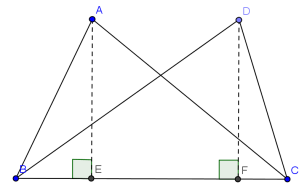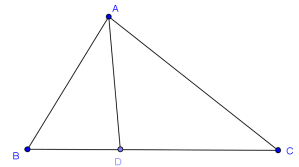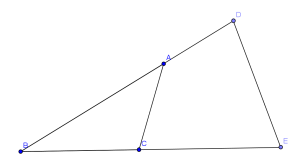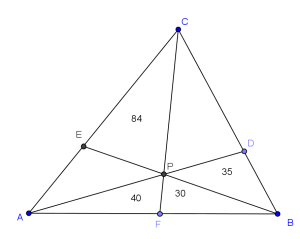Perimeter of triangles. The most obvious way to obtain it is to add the three sides of the triangle. Enough said.
Area of triangles. Other than the common (base)(height)/2, we have another way of computing the area of a triangle. And this method is related to the perimeter of the triangle.
Ever heard of Heron's formula? If you don't know about it, well pay attention. Heron's formula states that the area S of a triangle whose lengths are a,b,c is
,
where , also known as the semi-perimeter.
The proof of it is quite.. complicated, so you can ignore it and skip to ** if you feel uncomfortable reading it.
Proof
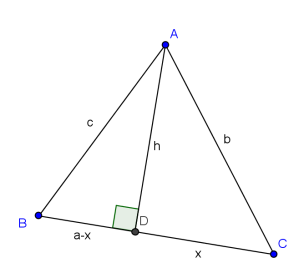
As shown in the diagram above, BC=a, CA=b, AB=c, AD=h, where at D. Let CD=x, then
(By Pythagoras')
Therefore,
(By Pythagoras')
Simplifying yields
(s denotes the semi-perimeter here.)
(By substituting
into the equation)
Proof Complete.
**
Another way to calculate the area of a triangle, and is quite commonly used when you reach upper secondary, is using trigonometry. Use the diagram below to aid you in understanding the formula.
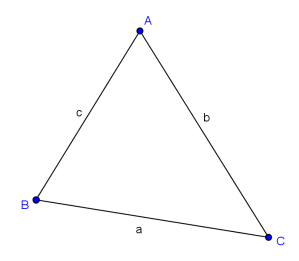
The area S of the triangle ABC is
Another way to interpret the formula is to say that the area of triangle ABC is "Half-ab-sine the included angle". Included angle means the angle in between. At least that's what I heard from other people.
There are also other variations to the formula, but that will require knowledge from trigonometry beforehand, so I won't be covering it in this post.
There is another way to compute the area of a triangle, but this formula only applies for equilateral triangles. Remember, only equilateral triangles. The area of the triangle ABC, with lengths s is equal to
The proof is relatively easy, involving only the Pythagoras' theorem.
Comparison of areas of triangles
In solving geometry questions, one can consider using area to solve the problem. Using area to solve a geometry problem often require us to relate the areas of different triangles with the ratio of line segments and hence solving the problem. Below are a few properties that one must know in order to use this technique (I'll provide diagrams to aid you in comprehending the properties):
- For 2 triangles with equal bases, the ratio of their areas is equal to the ratio of the heights on the bases.
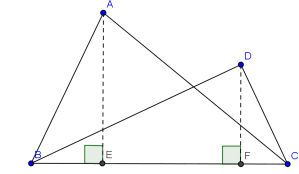
For example, in the above diagram, where [ABC] denote the area of ABC,
Therefore, the area of 2 triangles are equal if they have equal bases and equal heights on the bases.
For example, in the above diagram, if AE=DF, we have
[ABC]=[DBC].
- For 2 triangles with equal height, the ratio of their areas is equal to the ratio of their bases.
- If 2 triangles have a pair of equal angles, then the ratio of their areas is equal to the ratio of the products of the 2 sides of the equal angles.
- If 2 triangles have a pair of supplementary angles, then the ratio of their areas is equal to the ratio of the products of the two sides of the supplementary angles.
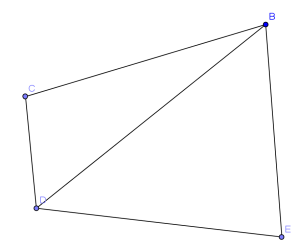
For example, in the above diagram, BCDE is a cyclic quadrilateral. This implies that
The proof of this involves some basic trigonometric properties, so if you do not understand the proof, just ignore it and skip to **.
Proof
Since
Hence the original equality becomes
Proof Complete.
**
- As seen in the diagram below, if ABCD is a convex quadrilateral and their diagonals intersect at O, then we have
and
